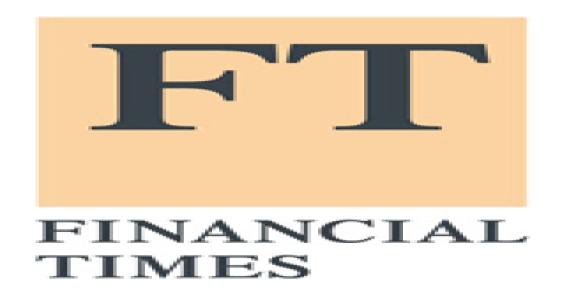
US B-schools, which pioneered management education about hundred years back, still rule the roost; increasingly, European B-schools are asserting themselves; and, sadly, only a few Asian B-schools find a place on this important list.
The Top 5 chart toppers are University of Pennsylvania’s Wharton Business School (US), Columbia Business School (US), Harvard Business School (US), Stanford Business School (US) and London Business School (UK).
About the overall buoyant MBA market, Financial Times observes that “it is more than a decade since the MBA business has seen such buoyancy, with aspiring students fighting for places at top schools while recruiters scrabble to attract the most accomplished graduates. Not since the early 1990s has an increase in MBA applications coincided with a healthy job market for graduating students.”
Financial Times’ rankings are based on data collected from two main sources: the business schools themselves and their alumni who graduated three years ago (in 2003). The criteria used in the rankings are grouped into three main areas: alumni salaries and career development; diversity and international reach of the business school and its MBA program; and the research capabilities of each school. This year, more than 10,000 alumni responded. The process of compiling the survey began in July 2006 and 155 business schools that met the criteria for participation began the process. To be eligible, a business school have to be internationally-accredited by a body such as the AACSB, Amba or Equis; it must have a full-time MBA program that has been running for at least five years; and it must have thrown up its first class of graduates at least three years ago. Of the 155 schools that took part initially, 113 were ranked and the remaining 42 were excluded because there were insufficient alumni data.
The other B-schools that are part of Top 10 list include GSB University of Chicago (US), Insead (France & Singapore), Stern School at New York University (US), Tuck School at Dartmouth College (US) and Yale School of Management (US). The Shanghai (China)-based CEIBS has edged in at number 11. Many European schools have found a place between No 11 and No 20, like the Instituto De Empresa (Spain), IMD (Switzerland), Judge School at University of Cambridge (UK) and IESE (Spain).
Asian B-schools don’t have much to be cheerful about. Only two Singapore based B-schools, Nayang Business School (placed 67) and NUS (placed 81), feature (other than CEIBS).
This is what Financial Times has to say about the current scenario in the B-schools market: “When the Financial Times began its rankings of global business schools in 1999, it was the first major publication to take the view that the MBA degree was a global qualification and that the best programs would produce the global managers of the 21st century. At the time, the MBA degree was largely seen as a US qualification for US managers. This was borne out by the rankings of the day, including the FT’s own ranking of that year. In 1999, 31 of the top 50 schools were located in the US, and they dominated the top of the table. Only three non-US schools – all European – were ranked in the top 20 and only one, London Business School, in the top 10.” Then, it goes on to say: “How times have changed. The FT 2007 global rankings includes schools from China, Singapore, Australia, Brazil and South Africa. More significantly, there are eight European and one Chinese school ranked in the top 20.”
MBAUniverse.com will continue to report more details and trends from this important survey. Watch this space.



























